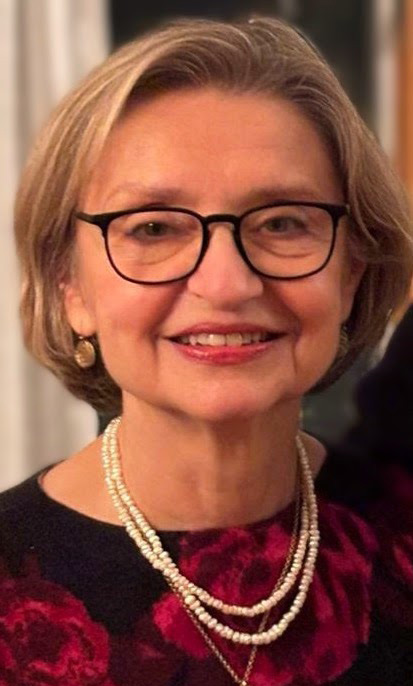- Apply
- Visit
- Request Info
- Give
Kirchmann publishes 'Polish American Voices'
Book recounts 400 years of Polish immigrant history
Written by Elisabeth Craig
Published on January 10, 2024

Professor Emerita Anna Jaroszyńska-Kirchmann's new book, “Polish American Voices: A Documentary History, 1608-2020” compiles 145 documents of Polish American immigrants and their descendants, telling of their journeys, struggles and triumphs.
Kirchmann’s focus as a history professor was on immigration, ethnic history and recent American history. She has published extensively on Polish American immigration, served as president of the Polish American Historical Association and is editor-in-chief for the "Polish American Studies" scholarly journal. In addition to the primary sources from Polish American stories, her book includes historical references and additional sources.
“What we were looking to put in the book was a variety and diversity of both voices and historical sources, including organizational documents, interviews, letters and press articles, as well as fiction, poems, memoirs, posters and even cartoons,” said Kirchmann. “In my opinion, this really helps to see the richness of expression and the breadth of the experience. Polish Americans — not just immigrants, but also further generations — discuss their own experiences as well as comment on the American society which they are a part of, on Poland and on the world.”
According to Kirchmann, the Polish American experience varies from person to person, due to factors such as age, religious beliefs, education, race, skills and familial relations, and of course when they immigrated.
 The contributions of Poles started in 1608 since the beginnnings of the first English settlement in America, with Polish craftsmen working in glass, pitch and tar. Polish Gen. Casimir Pulaski, one of the nation’s first cavalry commanders, served in the American Revolution. Military engineer Gen. Tadeusz Kosciuszko fortified West Point.
The contributions of Poles started in 1608 since the beginnnings of the first English settlement in America, with Polish craftsmen working in glass, pitch and tar. Polish Gen. Casimir Pulaski, one of the nation’s first cavalry commanders, served in the American Revolution. Military engineer Gen. Tadeusz Kosciuszko fortified West Point.
As time progressed, Poles arrived in what Kirchmann describes as “specific waves of immigration.” The later 19th century was characterized by socioeconomic and political changes in both the homeland and the United States. Polish immigrants came for economic reasons or because of political exile. At the turn of the 20th century, Poles created thriving communities within large cities and small towns as they navigated events like the world wars and the Great Depression.
“We hear for instance from a poet whose parents were refugees in World War II and never fully recovered from their trauma; a man who felt desperately humiliated by his inability to find work during the Great Depression; a girl who questioned her mother’s desire to send her to a Polish parish school; Polish gay men in Chicago; a veteran of the Vietnam War; or different generations of Polish American women bonding over their cooking skills,” explained Kirchmann.
While defining their own experiences, Polish American voices heavily influenced American culture. “The voices of immigrants in our volume speak to the variety of those experiences in different time periods and circumstances,” said Kirchmann. “Some describe the structure of the communities complete with organizations, press and publishing houses. Others comment on how individuals dealt with the issues of identity, for example, a question if a person can be both Polish and American, what to do about the assimilation of the second generation, or what is the immigrant responsibility toward the homeland?”
Today, Polish Americans make up a large portion of the country’s population. Since the early 20th century, the number of people who claim Polish ancestry has skyrocketed from two million to nine million, according to Kirchmann. In 2020, the Census Bureau named Polish Americans as the sixth largest ethnic group in the United States.
In the book's dedication, Kirchmann and her associates acknowledge the students who assisted with their project. “This includes some of Eastern’s history students who over my 25 years in the Department of History studied with me on immigration and ethnic history, wrote insightful papers and asked good questions,” said Kirchmann.
A Polish translation of Kirchmann’s book is currently in the works and will be available in Poland in the latter half of 2024. In the meantime, Kirchmann is working on a book that explores the cultural impact of the Poles from a culinary lens. “It will be based on solid historical research, but it will be directed to a broader reading public. As you can imagine, the research is delicious!” she said.


